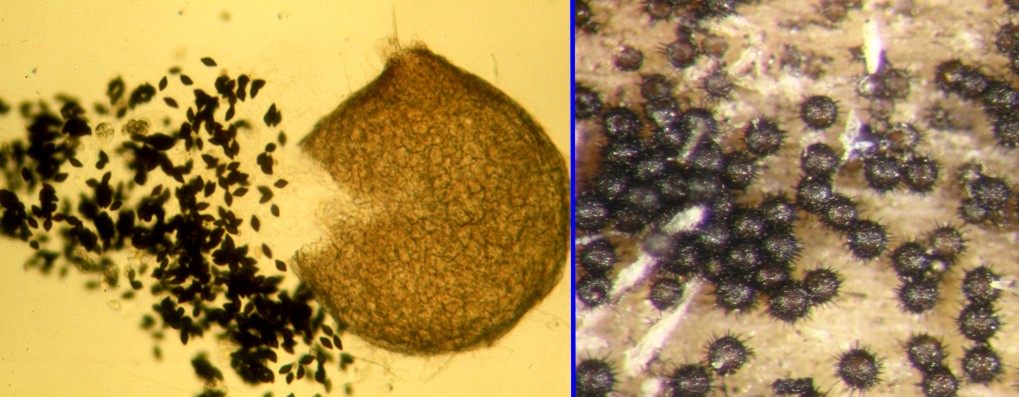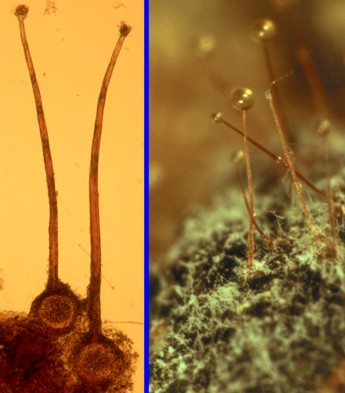Home >> Diversity and classification >> True fungi >> Dikarya >> Ascomycota >> Pyrenomycetes >> Sordariomycetes >> Hypocreomycetidae >> Other Hypocreomycetidae
OTHER HYPOCREOMYCETIDAE
The Hypocreomycetidae contains several families not given separate treatment on these pages and a few species that have not yet been satisfactorally classified. The largest of these excluded groups is the Bionectriaceae, a family characterized by brownish to colourful perithecia that do not change colour when mounted in KOH (see the page on the Nectriaceae for a picture of these colour changes). The majority appear to have asexual stages belonging to the genus Acremonium. Several species of Bionectriaceae produce their ascospores in cleistothecia and are discussed on our pages dealing with plectomycetes. The Bionectriaceae are similar to the Nectriaceae but tend to be parasites on other fungi and fungus-like organisms rather than on plants. However, many appear not to be parasites at all.

The images above illustrate members of two other families, the Melanosporaceae at left and the Niessliaceae at right. These two families serve as mirror images to one another: Melanospora species have brightly coloured perithecia but very dark, almost black, ascospores. Species of Niesslia, such as N. exilis in the picture, have darkly coloured perithecia and pale ascospores.

The picture at left is of Sphaeronaemella fimicola, a common fungus on fresh dung. It is a parasite of other fungi and cannot be grown in the laboratory without the presence of a suitable fungus host. It has long-necked perithecia, and asci that dissolve at maturity to release the ascospores passively. The spores are then pushed up the long neck where they collect in a clear droplet of fluid. The will adhere to the body of a passing insect or mite and be carried to a new source of fresh dung. In the picture, the left panel show the whole perithecia while the right panel shows the fungus on dung with only the necks protruding. Note the drop of spore-bearing liquid at the tips of the necks. Sphaeronaemella helvellae is onother species in this genus that grows as a parasite on Gyromitra infula, a stipitate operculate discomycete. It is not yet clear where Sphaeronaemella should be classified but it appears to be a member of the Hypocreomycetidae, possibly near Ceratocystis in the Microascales according to Spatafora and Blackwell (Mycological Research 98:1-9. 1994).